Cooking wine plays a crucial role in enhancing flavor profiles in a multitude of dishes. This unique ingredient is more than just a liquid; it’s a form of culinary artistry that can elevate a meal from ordinary to extraordinary. Whether you’re a novice cook or an experienced chef, understanding how to use cooking wine can dramatically impact the taste of your food.
When cooking with wine, it’s essential to choose the right type. Not all wines are created equal when it comes to cooking, and selecting the appropriate one can make all the difference. Generally speaking, you should avoid wines labeled as “cooking wine,” as they often contain added salt and preservatives that can negatively affect the flavor. Instead, opt for a decent bottle of wine that you would enjoy drinking, as it will impart better flavors to your dish.
Cooking wine can serve multiple purposes in the kitchen:
- Deglazing: One of the primary functions of cooking wine is to deglaze pans. After sautéing meats or vegetables, adding wine to the pan can help dissolve the caramelized bits stuck to the bottom, creating a rich base for sauces.
- Marinades: Wines are excellent for marinating proteins like chicken or pork. The acidity helps to tenderize meat while infusing it with flavors.
- Flavor Enhancement: Adding wine to sauces or stews enriches the overall flavor profile. It deepens the complexity of the dish, allowing flavors to meld beautifully.
The acidity in wine plays a significant role in flavor enhancement. It can brighten up a dish, making it taste fresher and more vibrant. For instance, white wine is often used in seafood dishes, where its crispness complements the light flavors of fish. Conversely, red wine pairs well with hearty dishes like beef stews and sauces, lending a darker, richer flavor profile.
It’s beneficial to note that the cooking process will alter the wine’s flavor. As the wine cooks down, its sweetness and acidity usually increase, intensifying the overall taste. Consequently, the type of wine you choose will directly affect the outcome of your dish. Here’s a quick reference guide on what types of cooking wine work best for different foods:
| Type of Wine | Best For |
|---|---|
| White Wine | Chicken, Fish, Pasta |
| Red Wine | Beef, Lamb, Tomato-Based Dishes |
| Sweet Wine | Duck, Pork, Glazes |
| Dry Vermouth | Brining, Sauces, Chicken |
In more advanced cooking, the use of cooking wine can also introduce notes of terroir—essentially the unique flavor gained from the wine’s origin. This adds a layer of depth to your cooking that can be quite remarkable, allowing you to replicate regional flavors. For instance, using an Italian red wine in a rustic Italian dish can enhance authenticity.
Another reason to use cooking wine is to balance flavors. A splash of wine can counteract richness in fatty dishes, bringing harmony to the meal. For example, the tartness of white wine can cut through the richness of cream-based sauces, creating a more balanced flavor. When combined correctly, the taste profile will not only be more enjoyable but may also surprise your palate with nuanced flavors.
To deepen your culinary expertise, consider experimenting with various cooking wines in different recipes. You can find a wealth of information and ideas at Cooking Light or Food & Wine. Both sites provide excellent resources and recipes that can help you integrate cooking wine into your daily meals.
Remember that while cooking wine enhances flavors, moderation is key. You want the wine to complement, not overpower the dish. Taste as you go, adjusting accordingly to achieve the desired flavor balance. Ultimately, cooking with wine opens up myriad pathways to explore and can significantly elevate your culinary creations.
Understanding the Different Types of Cooking Wine
Cooking wine is a versatile ingredient used in many recipes to enhance flavor. When you think of cooking wine, you might face a variety of options on the shelf. Each type brings its own unique taste profile, and knowing which one to choose can significantly impact your dish. Here’s a deeper look at the different types of cooking wine and how you can use them effectively.
Types of Cooking Wine
Cooking wines come in various varieties, mainly categorized by their base ingredients such as red wine, white wine, and specialty wines. Here’s a breakdown of the most popular types:
- Red Cooking Wine: This type of wine has a robust flavor that pairs well with hearty dishes. It is typically used in red sauce pastas, braised meats, and marinades. Look for options that are low in salt or sodium content.
- White Cooking Wine: White cooking wine is perfect for lighter fare such as poultry and seafood. It adds acidity and brightness to dishes like risottos or creamy sauces.
- Sherry: Often used in Spanish cuisine, sherry adds a nutty flavor and is great for sauces. It pairs wonderfully with chicken and seafood dishes, enhancing their complexity.
- Sake: This Japanese rice wine is not just for drinking; it also adds a delicate flavor to Asian dishes. You can use sake in marinades, dressings, or stir-fries.
- Cooking Marsala: Marsala wine is known for its caramel flavors. It’s ideal for rich sauces or when preparing dishes like chicken marsala or certain desserts.
The Role of Cooking Wine in Flavor Development
Wine in cooking serves two essential purposes: flavor enhancement and tenderizing. Alcohol in cooking wine helps to dissolve flavor compounds, allowing flavors to meld and develop while simmering. Additionally, the acidity in the wine helps to tenderize proteins by breaking down tough fibers.
It’s important to note that not all wines labeled for cooking are created equal. Many contain added salt, which can negatively affect the taste of your dish. Instead, consider using a bottle of wine you would enjoy drinking. It will not only elevate the taste but also contribute to a better culinary experience.
How to Choose the Right Cooking Wine
When selecting a cooking wine, consider the following factors:
- Flavor Profile: Match the wine to the dish. Red wines complement heavier flavors, while white wines suit lighter dishes. The style of your meal should guide your choice.
- Quality: Choose good-quality wines for cooking. Wines meant for cooking may have preservatives and additives that can influence the final flavor negatively.
- Alcohol Content: Generally, you don’t want to use wines with high alcohol content in cooking as they can overpower the dish.
Tips for Using Cooking Wine
To get the best results with your cooking wine, keep these pointers in mind:
- Use wine early in the cooking process to let the flavors develop.
- Don’t use cooking wine directly from the bottle. Instead, pour out only what you need for your recipe.
- Make sure to pair the wine with ingredients that complement its taste for better balance.
- Consider a splash of cooking wine as a finishing touch for sauces or soups to brighten up the flavor.
If you’re unsure about which cooking wine to choose, consider checking out resources such as Wine Spectator for expert insights on wine selection or The Kitchn for recipe ideas that utilize cooking wine.
Cooking wine into your culinary practice can greatly enhance the depth and richness of your meals. Whether you’re preparing a simple dinner or an elaborate feast, understanding the various types of cooking wine and their appropriate uses will help you elevate your cooking to a new level.
How to Choose the Right Cooking Wine for Your Recipes
Cooking wine can enhance your meals, adding depth and flavor to dishes that might otherwise be bland. Choosing the right cooking wine means understanding the types available and how they can impact taste. Here are some key points to guide you in selecting the perfect cooking wine for your next culinary adventure.
Types of Cooking Wine
Cooking wines generally fall into two main categories: red and white wines. Each type comes with its own unique flavor profile, making it essential to choose based on the dish you are preparing.
- Red Cooking Wine: Ideal for savory dishes like beef stews and marinades. It adds a rich, full-bodied flavor that complements hearty ingredients.
- White Cooking Wine: Best for lighter dishes, such as chicken or seafood. White wine can brighten flavors and enhance the freshness of the ingredients.
Key Factors to Consider
When selecting a cooking wine, consider the following factors:
- Flavor Profile: Match the wine’s flavor with the dish. For example, use a robust red wine for red meats and a crisp white wine for fish.
- Quality: Use a wine that you would drink. Low-quality wines can have off-flavors that may ruin your dish.
- Avoid Cooking Wines: Many inexpensive cooking wines are loaded with salt and preservatives, which can negatively affect your dish. Look for true wines rather than labeled “cooking wine.”
- Alcohol Content: Cooking does evaporate some alcohol, but if you’re concerned about alcohol byproducts in your dish, opt for alcohol-free cooking wines or other substitutes.
How to Use Cooking Wine
Proper use of cooking wine can elevate your dish. Here are some tips to make the most of it:
- Deglazing: After browning meat in a pan, add cooking wine to loosen the browned bits. This technique adds a depth of flavor to your sauce or dish.
- Marinading: Incorporate cooking wine in marinades to tenderize meat and infuse it with flavor. Pair red wine with robust meats and white wine with chicken or fish.
- Reducing: For sauces, simmer cooking wine to reduce it down. This concentrates the flavors and creates a rich, savory base.
Recommended Cooking Wines
Here’s a handy table for some popular cooking wines to assist you in making your selection:
| Wine Type | Best For | Flavor Notes |
|---|---|---|
| Pinot Noir | Red meats, Stews | Berry, Earthy tones |
| Sauvignon Blanc | Seafood, Poultry | Citrus, Herbal notes |
| Merlot | Chili, Pasta sauce | Plum, Black cherry |
| Chardonnay | Chicken, Risottos | Apple, Vanilla |
When you select the right cooking wine, you’re investing in the flavor and quality of your meals. For more information on how to incorporate cooking wines into your dishes, check out these resources:
The right cooking wine can transform your dishes and help you create delicious meals. Consider the type, flavor profile, quality, and how you plan to use it, ensuring your cooking adventures are as tasty as possible.
Common Misconceptions About Cooking Wine
Cooking wine is a staple in many kitchens, often used to elevate dishes by adding depth and richness. However, misconceptions abound regarding this culinary ingredient. Understanding these myths will help you use cooking wine effectively and enhance your cooking experience.
One common misconception is that all cooking wines are of inferior quality. Many people believe that they should only use “cooking wine” instead of good wine. In reality, you can and should use wine that is enjoyable to drink. The flavor of your food can be greatly impacted by the quality of wine you choose. Investing in a decent bottle for cooking can lead to significantly better results. After all, if you wouldn’t drink it, why cook with it?
Another prevalent myth is that you can substitute any type of wine for cooking wine without repercussions. While it’s true that different wines can impart distinct flavors, using a sweet cooking wine in a savory dish or vice versa can lead to unappetizing results. Understanding the type of wine that complements your dish can enhance the flavor. For example, Wine Enthusiast recommends using dry white wines, like Sauvignon Blanc, for chicken and seafood dishes.
Some home cooks believe that all cooking wine contains added salt, making it unsuitable for some dishes. While it’s true that many commercial cooking wines do include salt as a preservative, not all cooking wines do. You can find many varieties without extra sodium. Looking for “cooking wine” on the label? Check the ingredients! Choosing cooking wine with minimal additives can lead to your dish tasting far better.
A significant myth is that you can keep opened cooking wine indefinitely. Some people think, “It’s for cooking, so it will last forever.” However, once opened, even the best quality wine will start to oxidize. For best results, store opened wine in the refrigerator and try to use it within a month. Additionally, consider using a wine preserver to extend its shelf life.
There’s also a misconception that cooking wine should only be used for boiling and simmering. In reality, cooking wine can be used in numerous techniques, including marinating, deglazing, or even as a finishing touch. By incorporating wine into your cooking in various ways, you’ll discover a new depth of flavors in your meals.
Many enthusiasts believe high alcohol content in cooking wine makes it unsuitable for those who prefer low-alcohol options. While it’s true that high-alcohol wines may not be appropriate for every dish, there are plenty of low-alcohol wines available on the market. Consider options like Cooking Light, which can guide you in choosing the right type of wine that matches your preferences and complements your dishes.
People often think any common grape varietal will work well in cooking. However, each grape brings its unique flavor profile to the dish. For example, Merlot works well in red sauces due to its smoothness, while Pinot Grigio’s brightness perfectly suits seafood. Here’s a quick guide:
| Type of Wine | Best Uses |
|---|---|
| Cabernet Sauvignon | Stews, braises, and red meats |
| Chardonnay | Chicken, creamy sauces, and seafood |
| Sherry | Soup, risotto, and sauces |
| Pinot Noir | Marinades and glazes |
The idea that you can skimp on cooking wine because it “cooks off” is another misconception that can lead to disappointment. While alcohol does evaporate during cooking, the flavors can remain. An inferior quality wine can leave undesirable flavors behind. So, it’s best to use good-quality wine to ensure a delicious final product!
Some believe that you need a different wine for every dish. While pairing is essential, you don’t have to stock your pantry with numerous types of wine. With a few versatile options like dry white, red, and perhaps a sweet wine, you can handle various recipes without excess cluttering your kitchen.
Understanding these common misconceptions about cooking wine can greatly enhance your culinary experiences. With good-quality wine and the correct techniques, you can elevate your dishes and enjoy fantastic flavors with friends and family.
Substitutes for Cooking Wine: What You Need to Know
Cooking wine is often used in various recipes to enhance flavors and add depth to dishes. However, not everyone may have cooking wine on hand, or they may prefer alternatives for health or personal reasons. Whatever the case, there are tasty substitutes available that can provide similar benefits without compromising your dish’s integrity.
When considering alternatives to cooking wine, it’s essential to understand what characteristics you want to replace: acidity, sweetness, aroma, or flavor depth. Here’s a list of excellent substitutes available in your kitchen or at the grocery store:
- Vinegar: Common vinegar varieties such as white wine vinegar, balsamic vinegar, or apple cider vinegar can effectively replace cooking wine. Use a diluted version (mix with water, 1:1) for best results, as vinegar can be quite potent.
- Broth: Chicken, beef, or vegetable broth can lend richness to your dishes. It’s savory and flavorful—perfect for stews and sauces. Opt for low-sodium versions to better control the salt levels in your meals.
- Fruit Juice: Grape juice or apple juice can provide a similar sweetness that cooking wine does. Just be mindful of the sugar content, especially in desserts. Adjust the amount you use based on the sweetness of your juice.
- Soda: A splash of club soda or a clear citrus soda can add a light flavor and a bit of acidity. This works well in marinades or glazes.
- Cooking Sherry: If you don’t mind alcohol content, cooking sherry is a reasonable alternative, particularly in savory dishes.
Using substitutes for cooking wine can still yield delicious results. However, it’s vital to adjust the taste as you go. Here’s a table outlining the flavor profiles of each substitute to help you make an informed choice:
| Substitute | Flavor Profile | Best Used In |
|---|---|---|
| Vinegar | Sharp and tangy | Marinades, dressings |
| Broth | Savory and rich | Soups, stews, sauces |
| Fruit Juice | Sweet and fruity | Desserts, glazes |
| Soda | Crisp and slightly sweet | Marinades, cocktails |
| Cooking Sherry | Nutty and sweet | Savory dishes, sauces |
It’s also important to consider how you’re cooking. For example, if a recipe calls for white cooking wine, substituting with chicken broth can work well for savory dishes. On the other hand, recipes requiring red cooking wine can benefit from using beef broth or grape juice, depending on your desired flavor outcome.
Before using any substitute, try to taste it on its own. This way, you’ll know how it will affect your dish. Remember that while alternatives can recreate similar flavors, they may not always match the intended essence of the original ingredient. Experimenting is key!
If you’re looking for more specific recipes or creative ways to utilize these substitutes, consider visiting Simply Recipes for detailed guides, or Food Network for a wealth of cooking inspiration.
Substitutes for cooking wine into your recipes can be an enjoyable culinary journey. It opens up a world of possibilities and encourages you to think creatively about the flavors in your cooking. So, next time you find yourself without cooking wine, don’t panic—reach for these handy alternatives instead! Your dish can still shine with the right approach, and you might even discover new flavor combinations that you love.
Conclusion
Cooking wine serves as a powerful tool in the kitchen, significantly enhancing flavor profiles and bringing dishes to life. By understanding the various types of cooking wine available—from dry white and red wines to sweet options—you can make more informed choices during meal preparation. Selecting the right cooking wine not only aligns with the ingredients in your recipe but also complements the overall taste, turning everyday meals into culinary delights.
It’s essential to clarify common misconceptions surrounding cooking wine, such as the idea that any wine will suffice. Not all wines are created equal; the quality of the wine you use can greatly affect your dish. When you take the time to choose wisely, your food will reflect that effort.
For those who may prefer not to use alcohol, knowing suitable substitutes can keep your dishes flavorful. Options like broth, vinegar, or even grape juice can work in a pinch, ensuring you can still achieve delicious outcomes without compromising on taste.
Cooking wine is more than just an ingredient; it’s a means to elevate your cooking experience. Armed with knowledge about types, appropriate selections, and alternatives, you can confidently experiment in the kitchen. Embrace the versatility of cooking wine, and let it inspire your culinary creations. With the right wine, every meal can become an exceptional expression of flavor.


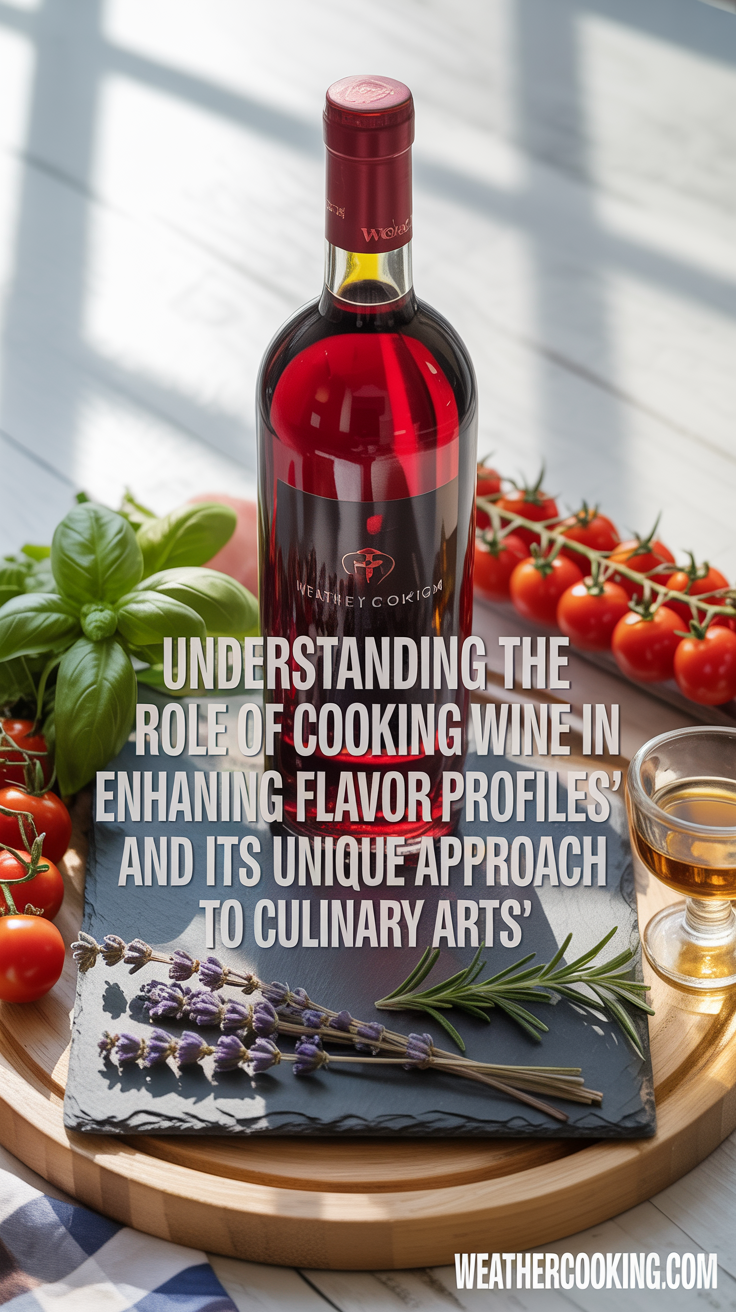
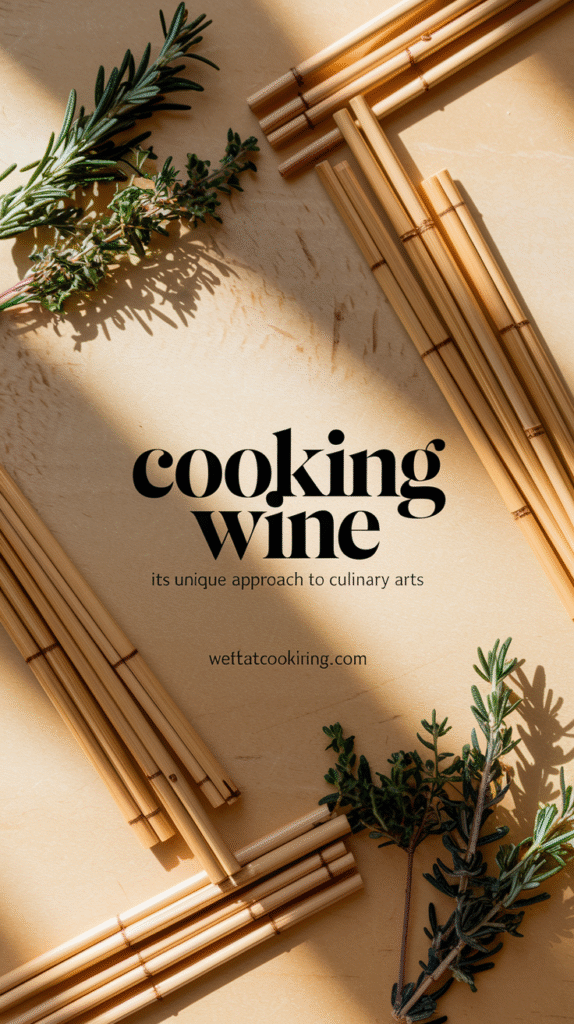
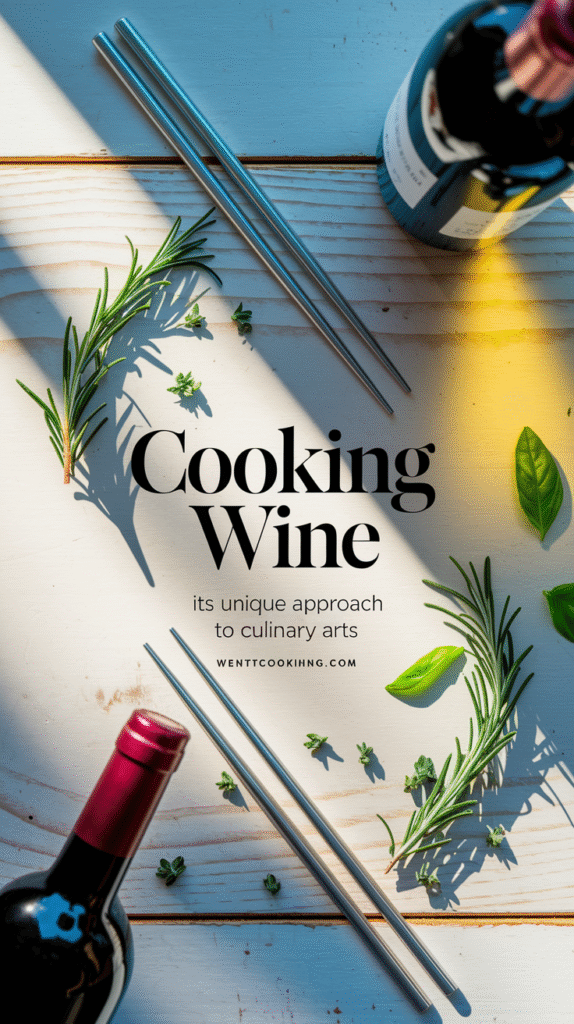
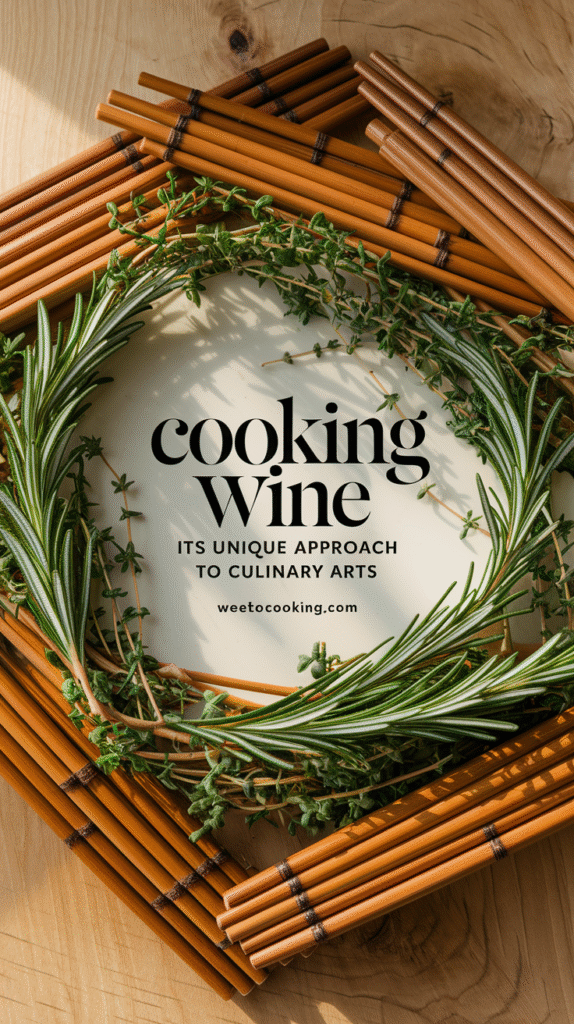
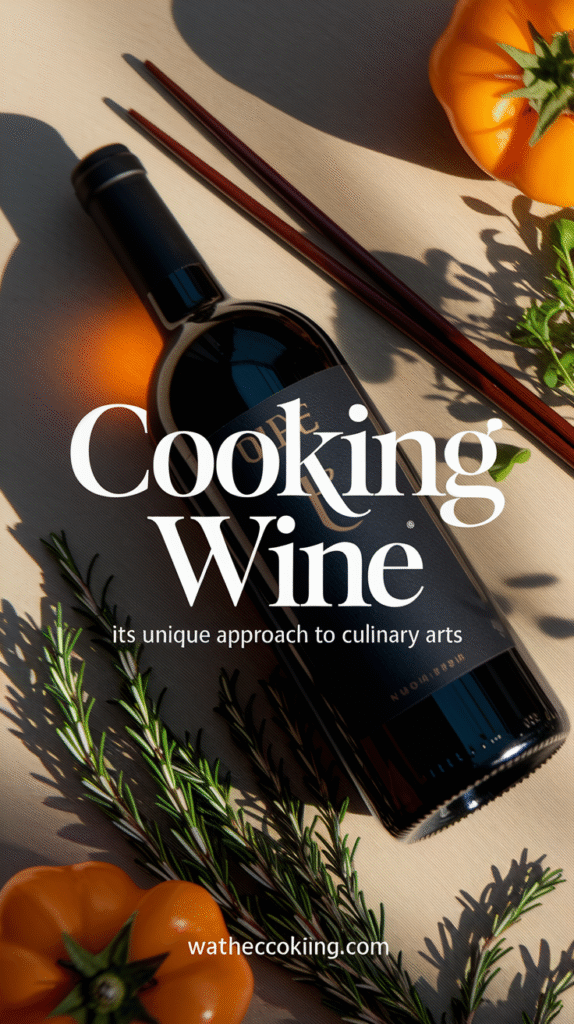

Leave a Reply